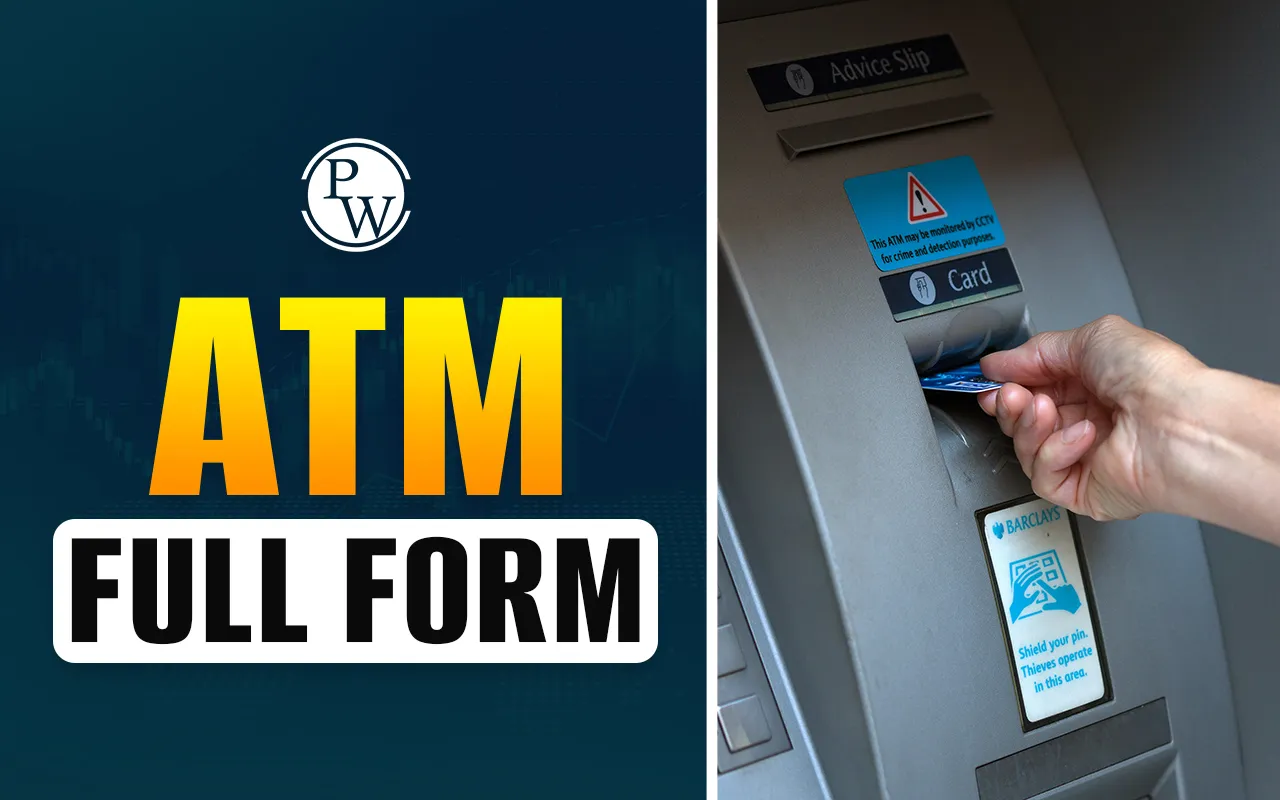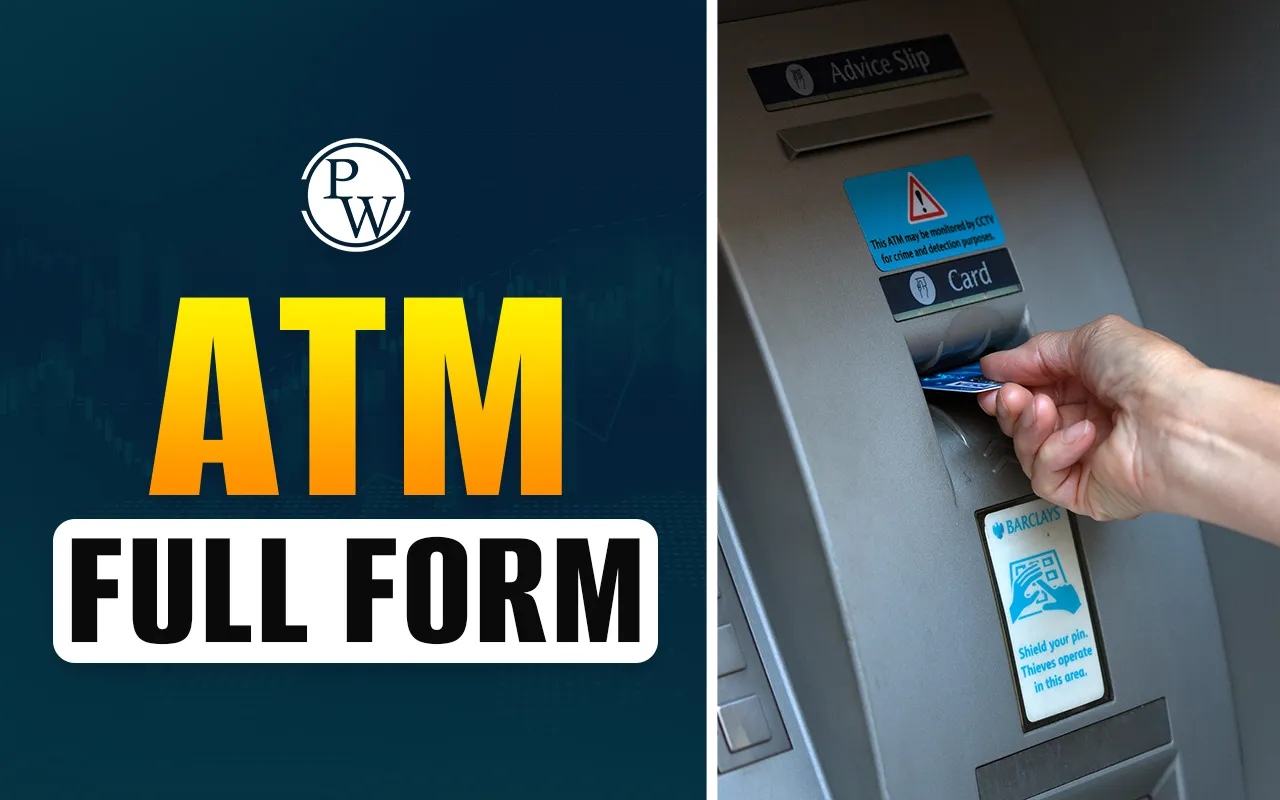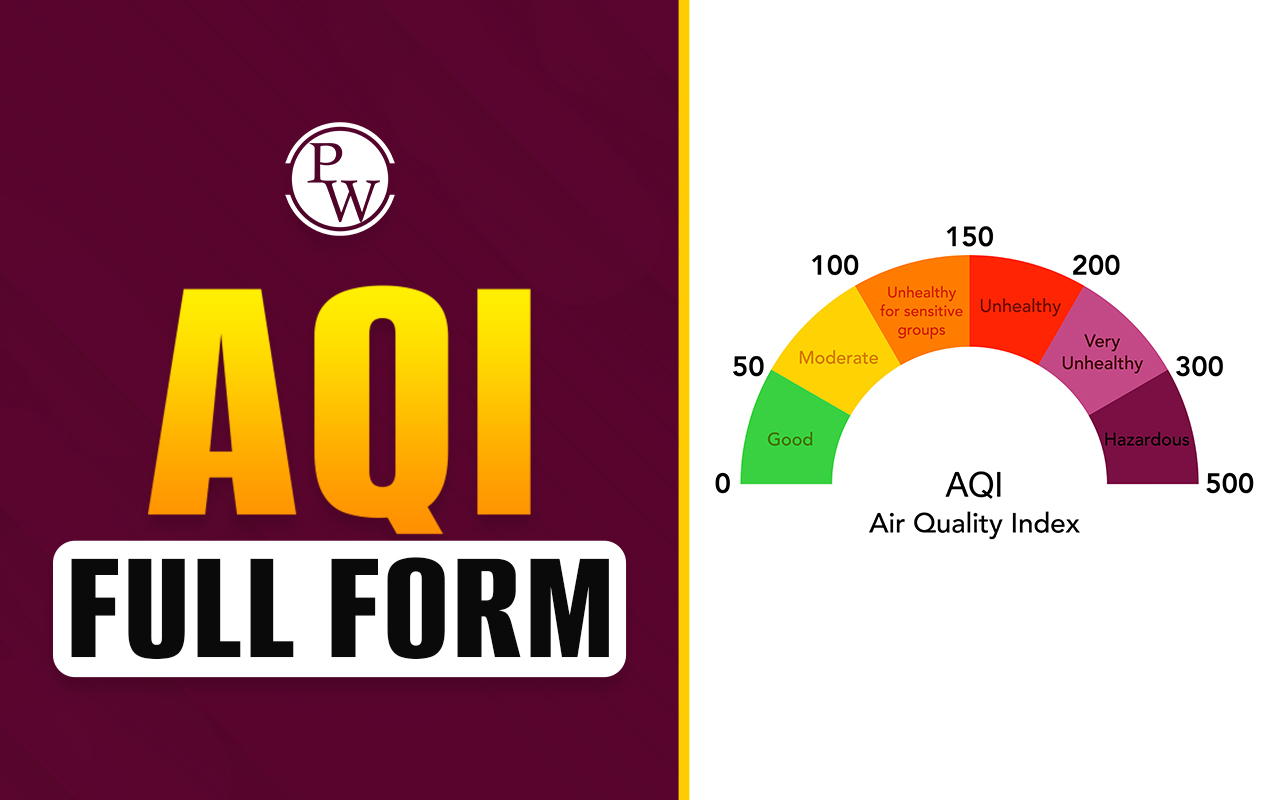

ATM full form is Automated Teller Machine. It is a banking tool that enables users to access cash and handle account services in a fast and secure manner. You can use an ATM to make ATM withdrawals, ATM balance inquiries, ATM fund transfers, and even deposit money using ATM deposit services.
This machine works 24/7, reducing the requirement to visit a bank branch. The ATM full form in banking is widely used in daily life, schools, and offices. Understanding how to use ATM provides a safe and convenient banking for everyone.
What is ATM Full Form?
The full form of ATM is Automated Teller Machine. Customers of banks can conduct financial transactions using an automated teller machine (ATM) instead of going to a bank branch. ATMs reduce banking by providing 24/7 access to services like deposits, fund transfers, balance enquiries, and cash withdrawals.
In short, Automated Teller Machine refers to a device that helps customers access their money at any time by automating banking operations. A breakdown of ATM full form is shown in the table below:
|
Breakdown of ATM Full Form |
|
|---|---|
|
Letter |
Full Form |
|
A |
Automated |
|
T |
Teller |
|
M |
Machine |
Meaning of Each Letter in ATM Full Form
The meaning of each letter in ATM full form is given below:
-
A: Automated: Functions automatically without human intervention.
-
T: Teller: Acts as a virtual bank teller for financial transactions.
-
M: Machine: A device providing electronic banking services efficiently.
Did You Know?
ATMs in Japan play music or jingles when dispensing cash.
History of ATM
The ATM was invented in the 1960s by Scottish engineer John Shepherd-Barron. The first automated teller machine (ATM) was installed at a London Barclays Bank branch in 1967 to provide customers with round-the-clock access to cash without needing to visit a bank branch. The first automated teller machine (ATM) in India was set up in Mumbai in 1987 by HSBC.
ATMs began as just basic cash dispensers, but they have undergone substantial development over the years. Numerous services are now available on modern ATMs, such as balance enquiries, cardless transactions, ATM fund transfers, ATM deposits, and even biometric authentication for increased security. Because they provide 24/7 quick, simple, and secure access to financial services, ATMs are now a significant part of banking worldwide.
ATM Functions
An ATM (Automated Teller Machine) is a banking device that automates important banking tasks, allowing customers to perform transactions quickly and securely without visiting a bank branch. It provides convenience, saves time, and offers 24/7 access to banking services. Below are the important ATM functions:
-
Cash Withdrawal: Instantly withdraw money from your account.
-
Cash Deposit: Deposit money or checks directly into your account.
-
Balance Inquiry: Instantly see how much money is in your account right now.
-
Fund Transfer: Transfer money between accounts within the same bank or to other banks.
-
Mini Statement & Account Update: View recent transactions and update account info.
-
Bill Payments: Pay utility bills and other services via ATM (available on some machines).
-
Security Features: Requires PIN for authorization to provide safe transactions.
Did You Know?
There are over 3 million ATMs worldwide, serving millions of customers daily.
Where is ATM Used?
ATMs are an important part of modern banking, providing convenient access to cash and account services anytime, anywhere. They are widely used in various locations to ensure customers can perform banking transactions without visiting a branch.
-
Banks and financial institutions for cash and account transactions.
-
Airports, railway stations, and malls for easy public access.
-
Daily life personal banking for cash withdrawals and deposits.
-
College campuses or office complexes for convenient banking.
-
Government offices for pension, salary, and welfare fund distribution.
Examples of ATM in Use
ATMs make banking simple and convenient by allowing users to perform various transactions without visiting a bank branch. The following examples show how common ATM services like cash withdrawal, balance inquiry, and fund transfer work step by step.
Example 1: Cash Withdrawal
Step 1: Insert your debit/ATM card and enter your PIN.
Step 2: Select “Withdrawal” and enter the desired amount.
Answer: Cash is dispensed instantly.
Example 2: Balance Inquiry
Step 1: Insert your card and enter PIN.
Step 2: Select “Balance Inquiry.”
Answer: Your account balance is displayed on the screen.
Did You Know?
Many ATMs allow users to select their preferred language for easier transactions.
Types of ATM Machines
There are various kinds of ATMs, each used to meet particular banking requirements. Customers can better understand the services offered by each ATM by being aware of its types. The table below provides types of ATMs:
|
Types of ATM Machines |
|
|---|---|
|
Type of ATM |
Description |
|
On-site ATMs |
Installed at bank branches for easy access to account services |
|
Off-site ATMs |
Located in malls, airports, and public places for convenience |
|
Cash Dispensers |
Only provide cash withdrawals without additional services |
|
Full-service ATMs |
Offer withdrawals, deposits, balance inquiry, fund transfer, and bill payments. |
How to Use ATM?
Customers can conduct banking transactions without going to a bank branch by using an ATM, which is easy to use and convenient. By following a few easy steps, you can withdraw cash, check your balance, transfer funds, or deposit money safely and quickly. Below is are step-by-step process of how to use ATM:
Step 1: Insert your ATM/debit card into the machine.
Step 2: Enter your secure PIN.
Step 3: Select the transaction type: withdrawal, deposit, balance inquiry, or fund transfer.
Step 4: Follow the on-screen instructions.
Step 5: Collect your cash, receipt, and card safely.
Did You Know?
Many ATMs provide mini statements, showing your last 5–10 transactions instantly.
ATM Services: Withdrawal, Balance, Fund Transfer, and Deposit
ATMs provide important banking functions and features for convenience and efficiency. Depending on the bank and card type, their daily ATM withdrawal limit typically ranges from ₹25,000 to ₹50,000. With ATM balance inquiry, users can quickly check their account balance. ATM fund transfer enables secure money transfers within the same bank or to other banks. Many ATMs also offer ATM deposit services, allowing cash or check deposits that are processed instantly and reflected in the account in real-time. Transactions are safe and easy when you know how to use the ATM.
Did You Know?
The cash-counting sound at ATMs is mostly fake, just a speaker trick while the bills move quietly inside.
Differences Between ATM and Net Banking
ATMs are physical machines for cash withdrawals, deposits, balance checks, and fund transfers. Net banking is an online service for managing accounts, paying bills, and transferring money digitally. Knowing the difference helps users choose the best method for convenient and safe banking. The table below contains difference between ATM and Net Banking:
|
Difference between ATM and Net Banking |
||
|---|---|---|
|
Feature |
ATM |
Net Banking |
|
Access |
Physical machine |
Online via computer or app |
|
Transaction |
Withdrawal, deposit, transfer |
Transfers, bill payments, and account management |
|
Availability |
24/7 but location-dependent |
Anytime with internet access |
|
Security |
PIN-based |
ID/password, OTP, two-factor authentication |
ATM Advantages and Disadvantages
ATMs make banking easy by allowing cash withdrawals, balance checks, fund transfers, and deposits anytime. They are fast and convenient, but have limits and some security risks. Knowing the pros and cons helps users use ATMs safely.
Advantages:
-
24/7 access to cash and banking services
-
Reduces the need to visit bank branches
-
Convenient for fund transfers and deposits
-
Time-saving and efficient
Disadvantages:
-
Withdrawal limits apply
-
Risk of card skimming or fraud
-
May not provide cash during technical issues
-
Requires users to be cautious about security
Did You Know?
Despite fears, most ATM frauds happen due to card skimming or human error, not the machines themselves.
ATM Full Form in Hindi
ATM का फुल फॉर्म हिंदी में है स्वचालित कैश मशीन (Automated Teller Machine). यह मशीन बैंक ग्राहकों को बिना शाखा जाए, अपने खाते से कैश निकालने (ATM withdrawal), बैलेंस चेक करने (ATM balance inquiry), फंड ट्रांसफर करने (ATM fund transfer) और डिपॉजिट करने (ATM deposit services) की सुविधा देती है। आधुनिक एटीएम 24/7 काम करते हैं, जिससे बैंकिंग सेवाएँ तेज़, सुरक्षित और सुविधाजनक हो जाती हैं। ATM full form in Hindi को समझने से उपयोगकर्ता इसके कार्य, फायदे और सुरक्षित उपयोग के तरीके आसानी से जान सकते हैं और रोज़मर्रा की बैंकिंग को आसान बना सकते हैं।
ATM Full Form FAQs
What is ATM full form?
What are the types of ATM machines?
Can I do ATM fund transfer?
What is ATM vs debit card?
What is the ATM withdrawal limit?













